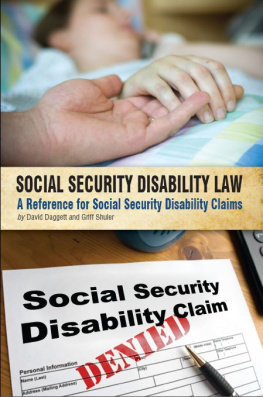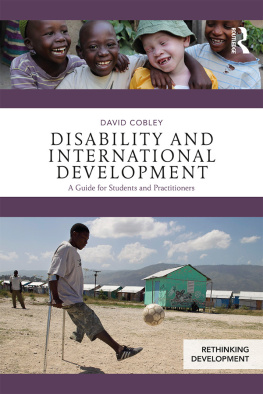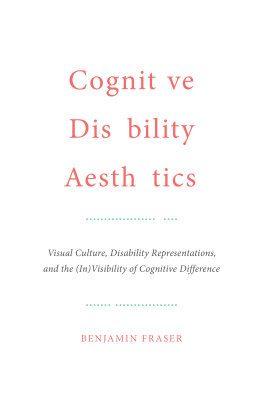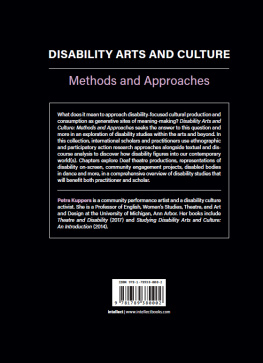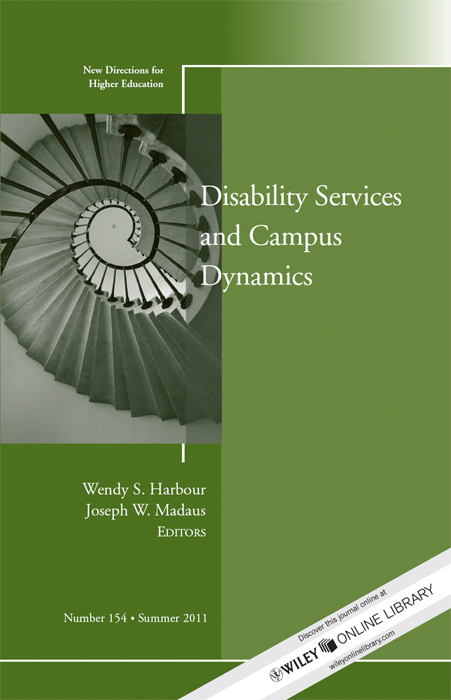Contents

Disability Services and Campus Dynamics
Wendy S. Harbour and Joseph W. Madaus
New Directions for Higher Education, no. 154
Martin Kramer, Betsy Barefoot, Co-Editors-in-Chief
Copyright 2011 Wiley Periodicals, Inc., A Wiley Company. All rights reserved. No part of this publication may be reproduced in any form or by any means, except as permitted under sections 107 and 108 of the 1976 United States Copyright Act, without either the prior written permission of the publisher or authorization through the Copyright Clearance Center, 222 Rosewood Drive, Danvers, MA 01923; (978) 750-8400; fax (978) 646-8600. The copyright notice appearing at the bottom of the first page of a chapter in this journal indicates the copyright holders consent that copies may be made for personal or internal use, or for personal or internal use of specific clients, on the condition that the copier pay for copying beyond that permitted by law. This consent does not extend to other kinds of copying, such as copying for general distribution, for advertising or promotional purposes, for creating collective works, or for resale. Such permission requests and other permission inquiries should be addressed to the Permissions Department, c/o John Wiley & Sons, Inc., 111 River Street, Hoboken, NJ 07030; (201) 748-6011; fax (201) 748-6008; www.wiley.com/go/permissions .
Microfilm copies of issues and articles are available in 16mm and 35mm, as well as microfiche in 105mm, through University Microfilms Inc., 300 North Zeeb Road, Ann Arbor, MI 48106-1346.
New Directions for Higher Education (ISSN 0271-0560, electronic ISSN 1536-0741) is part of The Jossey-Bass Higher and Adult Education Series and is published quarterly by Wiley Subscription Services, Inc., A Wiley Company, at Jossey-Bass, 989 Market Street, San Francisco, CA 94103-1741. Periodicals Postage Paid at San Francisco, California, and at additional mailing offices. POSTMASTER: Send address changes to New Directions for Higher Education, Jossey-Bass, 989 Market Street, San Francisco, CA 94103-1741.
New Directions for Higher Education is indexed in Current Index to Journals in Education (ERIC); Higher Education Abstracts.
Subscriptions cost $89 for individuals and $259 for institutions, agencies, and libraries. See ordering information page at end of journal.
Editorial Correspondence should be sent to the Co-Editors-in-Chief, Martin Kramer, 2807 Shasta Road, Berkeley, CA 94708-2011 and Betsy Barefoot, Gardner Institute, Box 72, Brevard, NC 28712.
Cover photograph Digital Vision
www.josseybass.com
Editors Notes
The second National Longitudinal Transition Study noted that the number of high school students with disabilities who are attending college has more than doubled since the 1980s (Wagner et al. 2005), and roughly 11 percent of college students are now identified as having disabilities (National Center for Education Statistics 2009). As several authors in this volume observe, the diversity of these students and the complexity of their disabilities are increasing over time. With greater inclusion occurring in K12 education, the media, and society in general, a college education is becoming a goal for more people with disabilities. It is also a legitimate way to improve employment outcomes in a difficult economy, where only 18 percent of people with disabilities are employed (U.S. Bureau of Labor Statistics 2010). Similarly, as more students with disabilities graduate, they are joining the ranks of staff and faculty in higher education, meaning that disability services is not just for students anymore.
Thus history repeats itselfas each wave of students with disabilities breaks ground in higher education, colleges and universities adjust accordingly, with the federal government mandating better access and services through legislation. Administrators and faculty are now seeing a new generation of people with disabilities on campus. They arrive in higher education with knowledge that the law is on their side, ready to learn or work on any campus that is right for them, whether or not the campus itself is ready. Students with a variety of disabilities who have traditionally been excluded from higher education (e.g., students with intellectual disabilities, students with significant psychiatric disabilities) are knocking on the door of higher education, wondering why that door is not accessible. In response, campuses are turning to disability services for guidance on legal compliance, reasonable accommodations, classroom instruction issues, and strategies to improve the campus climate. This New Directions volume examines what disability services may have to offer, and how campuses and disability services professionals may need to collaborate or expand traditional notions of disability and disability services.
This volume is divided into four sections. In the first chapter, Joseph W. Madaus provides an introduction and overview of the field of disability services, explaining how it developed as a profession. The chapter provides useful definitions of disability services, as well as background and context for other chapters.
The second section continues to define disability services, complicating views of what disability services may provide to campuses. In chapter 2, Donna M. Korbel, Jennifer H. Lucia, Christine M. Wenzel, and Bryanna G. Anderson from the University of Connecticut explain how collaboration with other units on their campus has improved disability services outreach and services to students, with creative ideas for reaching prospective and first-year students in particular. Then Rebecca C. Cory explains some basic procedures and terminology related to disability services, including the process for determining reasonable accommodations. She further encourages campus administrators and faculty to not only consider legal mandates, but also ethical matters that may go beyond compliance. In chapter 4, Dave Edyburn provides an additional example of this beyond compliance attitude, explaining how technology can enhance service provision and instruction, creating campuses that are universally designed for diverse learners, including students with disabilities. Addressing the common assumption that disability services is only for students, Dave Fuecker and Wendy S. Harbour use chapter 5 to explain how the disability services office at the University of Minnesota is also serving faculty and staff. Serving not only employees with disabilities and chronic illnesses, the office also handles workers compensation and insurance-related cases, centralizing services in one location. For campuses that need to expand or enhance services, the authors in this second section offer creative and varied recommendations.
The third section examines legal compliance in greater detail. In chapter 6, Salome Heyward discusses the Americans with Disabilities Act Amendments, students with psychiatric disabilities, and federal interest in accessible campus technology. Analyzing these issues using recent legislation and court cases, Heyward shows how campuses must continually respond to legal compliancean ongoing journey rather than an end point. Anne Lundquist and Allan Shackelford take a similar approach in chapter 7. They also recommend that campuses examine their compliance with the law carefully, focusing on the development of risk management policies that are consistent with the needs of students, faculty, staff, and the institution as a whole. Taken together, these authors guide campuses toward more thoughtful proactive compliance.


